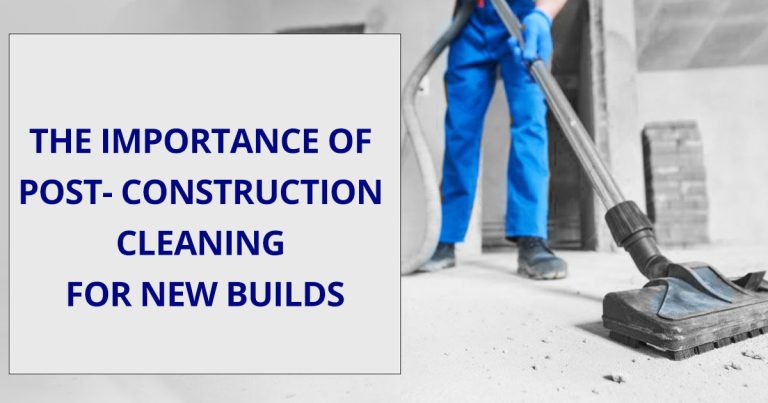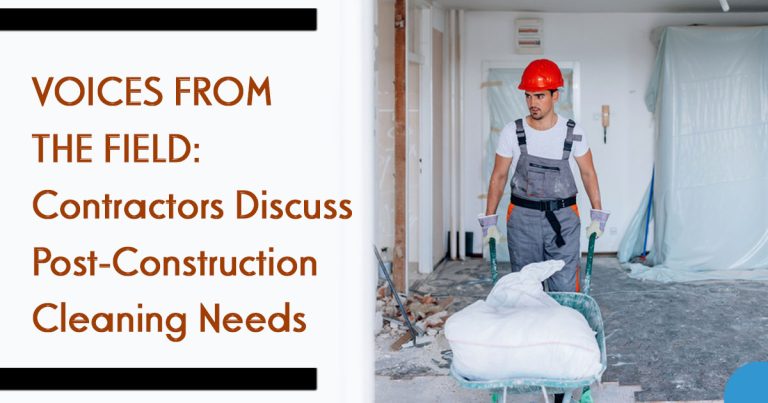Table of Contents
Planning a commercial building project is difficult due to the large number of individuals and factors to consider. Every decision, from where to locate the project and how much to spend to when it should be completed and if it follows all the rules, has an impact on the project’s outcome. Good planning ensures that everything runs well, reduces uncertainty, and meets expectations from beginning to end. One critical yet often overlooked aspect is arranging for professional post-construction cleaning. It ensures the site is safe, spotless, and ready for occupancy, leaving a positive final impression and avoiding delays during handover.

Ignoring Detailed Site Analysis
One of the most important parts of planning for commercial buildings is doing a complete site analysis. Developers sometimes don’t think about things like soil quality, zoning limitations, utility access, and geography, which can lead to delays or higher costs for many projects. If you don’t know a lot about the property, you can expect surprises during building. Not doing this step can not only affect the budget but can also mean that you need to redesign things, seek new permits, and renegotiate with contractors. Proper planning from the start plays a major role in how to pass final inspections without costly delays or rework.
Underestimating the Importance of Accurate Budgeting
A badly estimated budget can imperil a commercial construction project before it even begins. Many planning mistakes occur when people are overly optimistic and fail to consider hidden costs, changing material pricing, or a lack of labor. Without a contingency buffer, unplanned costs might quickly deplete all your resources, resulting in delays and reduced project scope. To create an effective budget, architects, engineers, and finance specialists who understand what each stage will require must collaborate. You must account for factors like inflation, logistics issues, and potential design revisions.
Failing to Set Realistic Timelines
Setting unrealistic or too ambitious schedules is another common mistake committed when planning commercial construction. When creating project schedules, consider the weather, the permitting process, and how to collaborate with workers from other trades. To create a realistic timeline, you must first determine how long each phase will take, from site preparation to final inspection. There should also be time set aside for unforeseeable delays, so that the project does not spiral out of control if one task takes longer than anticipated.
Overlooking Legal and Regulatory Compliance
Ignoring or underestimating legal and regulatory requirements can stall a commercial construction project. There are different construction codes, zoning laws, environmental rules, and safety requirements in each area. If you don’t get the right permits or don’t understand the rules for compliance, you could face big penalties, forced changes, or even orders to tear down your building. Legal due diligence must start as soon as planning begins and continue until the project is finished. To make sure that all the paperwork is in order and all the rules are followed, it is important to work with lawyers, code experts, and regulatory bodies.
Inadequate Risk Management Strategies
Risk is inherent in all construction projects, but neglecting to identify and prepare for possible hazards is a huge error. To design commercial construction well, you need to be proactive in assessing risks. This means looking at prospective problems, including labor disputes, material shortages, safety concerns, and delays caused by bad weather. Risk management plans should have backup plans, insurance, and other suppliers or subcontractors. Project planners can make their schedules and budgets more flexible by thinking ahead about what could go wrong.

Poor Communication Among Stakeholders
Lack of communication among stakeholders can result in misplaced expectations, costly modifications, and scheduling difficulties. The whole project suffers when architects, engineers, contractors, and clients don’t agree. From the very start of the planning phase, communication needs to be clear, consistent, and written down. Everyone who is involved should have access to the most current information, timetables, and design plans. Regular meetings, thorough reporting, and centralized communication tools help everyone stay on the same page.
Choosing the Wrong Contractors or Partners
Choosing the incorrect team might make a commercial construction project much less likely to succeed. If you only look at the lowest quote, you can end up employing contractors who don’t have the skills or experience to undertake complicated jobs. When you don’t do your homework before hiring partners, you often end up with bad work, delays, and safety problems. That’s why, just as in any renovation project, having a qualified contractor is essential to ensure quality, compliance, and smooth execution.
Checking references, looking over past projects, making sure the contractor has the right licenses, and making sure they understand the project’s specific needs should all be part of the vetting process. To ensure smooth project execution and minimize the risk of costly setbacks, it is crucial to engage reliable commercial construction services that understand the intricacies of planning and execution. A solid foundation in planning guarantees a structure that stands strong, both physically and financially.
Inflexible Design and Planning Approaches
Detailed planning is important, but being too strict with design and execution can also produce problems. Plans that can’t change to fit new situations or clients’ wants can cause delays in the project or costly changes later on. As a project goes forward, the needs of the market, the rules, or the input of stakeholders can change. If you don’t give room for changes, projects can get stuck and need a lot of redesigning or expense hikes. Design plans should include flexibility whenever possible so that they can grow, add new technology, or change their layout in the future.
Neglecting Post-Construction Planning
Neglecting the post-building phase and concentrating only on the construction period is another crucial planning error. After construction, there are final inspections, occupancy permits, handovers, and plans for maintenance. If these things aren’t taken care of early on, the move from building to running the business can be messy and slow. Clients need to be ready for how things work, how to manage the system, and how to keep it running overtime. Planning well after construction makes sure that the building can be used and maintained without any problems once it is finished.
Conclusion
Proper planning is the foundation of any successful commercial building project. By avoiding these frequent mistakes, you can keep prices, deadlines, and quality in check while making sure that every part of the construction meets legal standards and the needs of stakeholders. The power and clarity of the project’s first plan are what make each step work. Every stage, from making a budget and analyzing the site in depth to picking the ideal team and being ready for post-construction needs to be done with care and foresight.
Clean Starts Here — With Dirt2Tidy
Don’t let dirt and dust take over your day. At Dirt2Tidy, we deliver more than just cleaning — we bring comfort, clarity, and consistency to your space. Every service is designed with care, precision, and your peace of mind in mind.
🧼 Detail-focused, fully vetted professionals
📆 Book when it suits you — we’re flexible
🏠 From end of lease to deep home cleans — we do it all
👉 Take the first step toward a fresher, cleaner space.
📞 1300 789 178 | 🌐 Get an Obligation-Free Quote
🌿 Because a tidy space is a better place.





